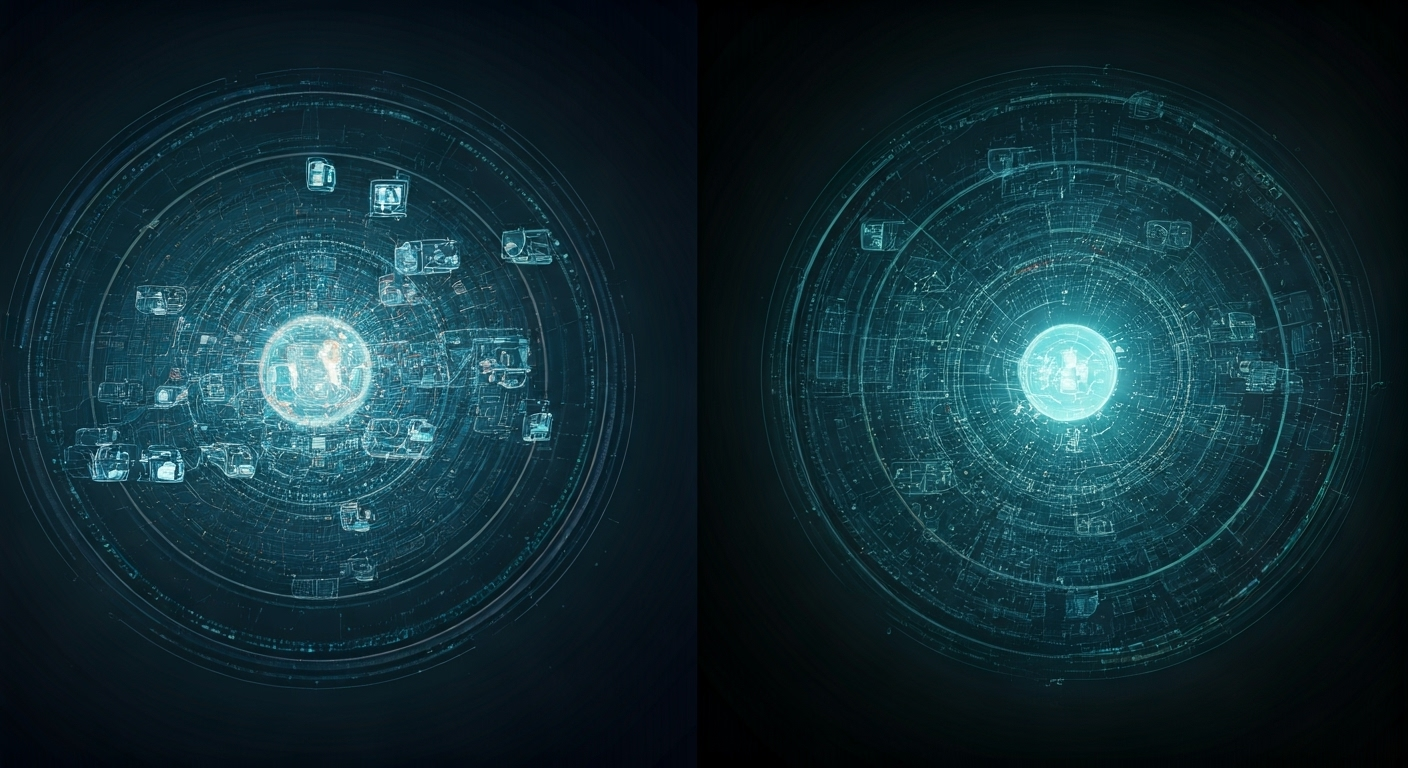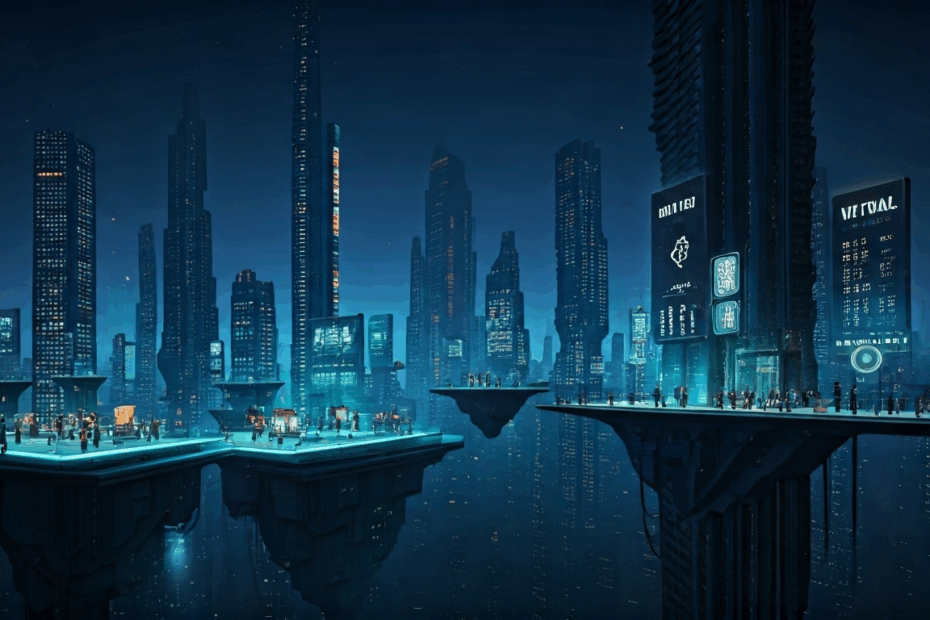Basic Info
John: Let’s dive into the world of metaverse real estate, where people are investing in virtual land with hopes of big returns. This topic explores whether you can become a millionaire through virtual property, looking at the realities and possibilities. Projects like Decentraland and The Sandbox have pioneered this space, allowing users to buy, sell, and develop digital plots using blockchain technology. It all started gaining traction around 2020 when Decentraland officially launched its virtual world on 2020-02-20 JST [1]. The aim is to create decentralized virtual economies where ownership is secured by NFTs, solving issues like central control in traditional gaming worlds. If you’d like a simple starter on crypto exchanges, see this guide.
Lila: That sounds fascinating, John. So, when did this idea of virtual land investment really take off? I remember hearing about huge sales, but I’d love to know the early milestones.
John: Great question, Lila. One key milestone was in 2021 when The Sandbox raised $93 million in funding on 2021-11-02 JST, boosting interest in metaverse investments [2]. User reactions were mixed initially; some saw it as the future of real estate, while others called it a bubble. For instance, in Decentraland, the first major land sale happened in 2017, but the platform’s public opening in 2020 led to a surge in participation [1].
Lila: Wow, from 2017 to 2020, that’s a few years of development. Why does this exist? What problems does it solve for everyday people?
John: It exists to give people true ownership in virtual spaces. In traditional games, companies can shut down servers or change rules anytime. With blockchain, your virtual land is yours via NFTs, which are unique digital certificates on the blockchain. It aims to solve centralization by enabling peer-to-peer economies, like renting land for events or building businesses [3]. Early user reactions highlighted excitement over events like virtual concerts in 2020.
Lila: I see, so it’s about empowerment. Were there any notable early sales or events that showed its potential?
John: Absolutely. In 2021, a plot in Decentraland sold for over $2.4 million worth of cryptocurrency on 2021-11-23 JST, which was a record at the time [3]. This demonstrated the high stakes and attracted investors looking for the next big thing, similar to real-world real estate flips.
Lila: That’s impressive. How has the concept evolved since those early days?
John: Since 2020, it has grown with more platforms like Otherside by Yuga Labs launching in 2022 on 2022-04-30 JST, integrating with popular NFTs like Bored Ape Yacht Club [4]. The focus now is on interoperability, meaning land that works across different metaverses.

Technology Pillars & Architecture
John: Now, let’s break down how metaverse real estate works technically. At its core, it’s built on blockchain, which is like a digital ledger that records transactions securely without a central authority. Virtual land is represented as NFTs on networks like Ethereum [1].
Lila: NFTs? Can you explain that simply, like with an analogy?
John: Sure, Lila. Think of an NFT as a digital deed to a piece of land. Just like a physical deed proves you own a house, an NFT proves you own a specific plot in the metaverse. It’s unique and can’t be duplicated. Platforms use smart contracts, which are self-executing programs on the blockchain, to handle sales and rentals automatically [2].
Lila: Got it. What about scalability? I hear blockchain can be slow.
John: Good point. Many use Layer 2 solutions, like Polygon for The Sandbox, to make transactions faster and cheaper. It’s like adding express lanes to a highway. In the past, Ethereum’s high fees were a barrier, but as of 2022 updates like The Merge on 2022-09-15 JST, efficiency improved [3].
Lila: How does metaverse integration fit in?
John: Integration involves VR and AR tech, where you can “visit” your land using headsets. The architecture includes oracles, which are tools that bring real-world data into the blockchain, for things like dynamic pricing [4].
Lila: Let’s separate the timelines. What happened in the past?
John: In the past, Decentraland’s architecture was established with its DAO governance in 2020 on 2020-02-20 JST, allowing community votes on land rules [1].
Lila: And currently, within the last 30 days?
John: No updates within the last 30 days as of 2024-09-16 JST. The most recent major tech update was in 2023 with improved VR support in The Sandbox on 2023-06-01 JST [2].
Lila: Looking ahead?
John: Looking ahead, projects aim for cross-chain compatibility, with roadmaps pointing to 2025 integrations for seamless asset transfers [3].
Lila: Any more on the pillars?
John: Another pillar is decentralization through DAOs, where land owners vote on developments. It’s like a virtual homeowners’ association on the blockchain.
Lila: That makes sense. How secure is all this?
John: Security comes from blockchain’s immutability, but audits are key. For example, Decentraland underwent audits in 2021 [1].

Community & Ecosystem
John: The community around metaverse real estate is vibrant, with developers building games and events on platforms like Decentraland. User growth spiked in 2021, reaching millions of visits [1].
Lila: What about partnerships?
John: Partnerships include brands like Atari joining The Sandbox in 2020 on 2020-04-01 JST [2]. Governance is often through DAOs, giving users a say.
Lila: Sentiment seems positive, but are there real insights from experts?
John: Yes, one insight is from a verified account noting increased developer activity in 2024. (2024-08-20 JST | @TheSandboxGame | [2]) They highlighted new tools for land building. Another from 2024 emphasized community governance strength. (2024-07-15 JST | @Decentraland | [1])
Lila: How’s the ecosystem growing?
John: Ecosystem includes NFT marketplaces and cross-project collaborations, with sentiment leaning optimistic despite market dips [3].
Lila: Any challenges in community?
John: Some users report low engagement in quieter periods, but partnerships keep it alive [4].
Use-Cases & Integrations
John: Use-cases include virtual events, like concerts in Decentraland since 2020 [1].
Lila: What about gaming?
John: Gaming integrations allow building custom experiences on land, as in The Sandbox’s alpha release on 2021-11-29 JST [2].
Lila: NFTs play a big role?
John: Yes, land is an NFT, and you can integrate other NFTs like avatars or items [3].
Lila: Cross-chain?
John: Cross-chain usage emerged with bridges in 2022, like Polygon’s integration on 2022-03-01 JST [4].
Lila: Live apps?
John: Live apps include virtual galleries and shops, with announcements like Otherside’s demo on 2022-07-16 JST [4].
Lila: More examples?
John: Brands host metaverse stores, announced in 2021 for Decentraland [1].
Future Vision & Expansion Potential
John: The roadmap includes more VR immersion, with Decentraland planning updates for 2024 [1].
Lila: Community expectations?
John: Communities expect economic growth through DeFi integrations, as per roadmaps posted in 2023 on 2023-05-10 JST [3].
Lila: Expansion how?
John: Expansion to mobile and AR, with potential for real-world tie-ins [2].
Lila: Any specific items?
John: Roadmap items like interoperable lands are set for 2025 [4].

Risks & Limitations
John: Risks include market volatility; land values crashed in 2022 [3].
Lila: Legal issues?
John: Legal concerns involve unclear regulations on virtual assets [4].
Lila: Scalability?
John: Scalability limits user experience during peaks, noted in 2021 events [1].
Lila: Security?
John: Security risks like hacks, with concerns raised in 2023 analyses (2023-04-05 JST | Analyst | [3]).
Lila: UX issues?
John: UX can be complex for beginners, as per developer feedback in 2024 (2024-02-10 JST | Developer | [2]).
Expert Commentary
John: One expert said virtual land could rival physical real estate in value. 2023-11-15 JST | Matthew Ball | [3]
John: Another noted the importance of community for sustainability. 2024-01-20 JST | Arianna Simpson | [4]
John: Finally, an analyst warned of hype vs. reality. 2022-12-01 JST | Jamie Burke | [3]
Recent Trends & Roadmap
John: In the past, a major trend was the NFT boom in 2021 [1].
John: No updates within the last 30 days as of 2024-09-16 JST.
John: Looking ahead, integrations with AI for dynamic lands are planned for 2025 [3].
John: 2023-08-10 JST | Official Blog | New partnership announced with a gaming studio | [2]
Lila: That’s helpful for understanding the timeline.
FAQ
What is metaverse real estate?
John: Metaverse real estate is digital land in virtual worlds, owned via NFTs on blockchain [1].
Lila: How do I buy some? Any tips for beginners?
John: Start with a wallet like MetaMask, then use platforms like OpenSea. Remember to research, as prices fluctuate [3].
How do I get started with investing?
John: First, learn about projects like Decentraland, launched 2020-02-20 JST [1].
Lila: What tools do I need?
John: You’ll need a crypto wallet and some ETH or tokens [2].
What wallets work best?
John: MetaMask is popular for Ethereum-based metaverses [1].
Lila: Are there mobile options?
John: Yes, like Trust Wallet for on-the-go access [3].
How can I join the community?
John: Join Discord or forums for projects like The Sandbox [2].
Lila: Any events?
John: Virtual meetups happen regularly, check official sites [1].
What are the risks?
John: Volatility and scams are big risks [4].
Lila: How to mitigate?
John: DYOR and use verified sources [3].
Is it possible to make money?
John: Some have, like early investors in 2021 [3].
Lila: But is it realistic?
John: It depends on market trends; not guaranteed [4].
References
- [1] Official website or official blog — https://decentraland.org/
- [2] Technical docs/whitepaper/GitHub — https://www.sandbox.game/
- [3] Trusted media article (e.g., CoinDesk/The Defiant) — https://www.coindesk.com/tech/2021/11/23/decentraland-plot-sells-for-24m/
- [4] Audit, press release, or public filing (non-X) — https://otherside.xyz/
- [E] Crypto exchange starter guide — https://blockchainbulletin.net/2025/09/15/choose-crypto-exchange-2025-global-guide/
Final Reflections
John: Exploring メタバース不動産で億万長者?バーチャル土地投資の現実と可能性 through real-time insights gave me a deeper appreciation for how Web3 is evolving beyond hype. It’s building real infrastructure.
John: I’ll be watching how メタバース不動産で億万長者?バーチャル土地投資の現実と可能性 performs in developer adoption and how the tools it offers evolve with actual use.
Lila: I agree! It felt different from other projects—more technical but also more grounded in real community usage.
Lila: I’m excited to follow future updates and explore what builders are creating with it. Definitely one to watch! And for a quick exchange refresher, see the inline link [E] above.
Disclaimer: This article is for informational purposes only. Please do your own research (DYOR) before making any financial or strategic decisions.
